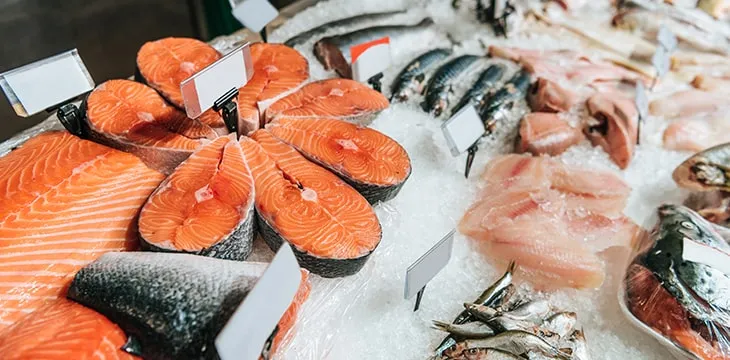|
Getting your Trinity Audio player ready...
|
Innovations in the food supply chain have brought some opportunities for blockchain to show how food can be tracked and traced from its roots to your restaurant plate.
As the world moves to consume foods that have been ethically sourced, producers across the supply chain need to demonstrate that the food that they sell to the consumer has come from the origin specified on the label. But with foods originating from thousands of miles away, how can a producer prove that their product came from?
A study from Oceana found that 43% of salmon was mislabelled with 69% of farmed Atlantic salmon being sold as a wild-caught product.
Traceability is critical in the seafood industry. In 2020 Bluefin tuna was sold for a record $3.1 million to sushi restaurant owner Kiyoshi Kimura. Of course, it is all very well if you can watch the fish being unloaded from the fishing boat each morning, but for many of us, our only exposure to the fish is on a fishmonger’s counter, in the frozen food aisle, or wrapped in plastic at the supermarket. We really have no idea of its starting point.
With its immutability, the BSV blockchain provides a ledger where entries cannot be modified once placed on chain. As soon as the fish is caught and recorded in a block, secured with a hash, then timestamped to prove the data exists. The record of the fish is immutably stored.
Every step in the supply chain involving the fish can be recorded. This shows a permanent record that can be audited and is traceable. The supplier can guarantee that the food originated where it is stated and has the records of blocks involved in its journey.
Farmers and fishermen often carry much of the information in their heads and do not need technology. A simple way to add their catch to the blockchain through a scanning device is needed. Any blockchain transactions and associated costs would be hidden from the device by an abstraction layer built into the scanning app.
This type of technology is already being used in countries like Norway, where the SeafoodChain is using blockchain technology to record transactions throughout the lifecycle of Halibut farming and production. Each stage is recorded onto the blockchain to build up a full data record of the fishes’ journey.
Excited to launch our next customer! @Local2LocalNL – Sustainable short food chains connecting citizens and farmers on a local, regional, national and European level.
Watch live now https://t.co/n5Z46juK0L#GBC22
— UNISOT (@UNISOT_) May 25, 2022
But it’s not only fish that can benefit from a blockchain-based supply chain. According to the United Nations (UN), over 600 million people fall ill, and 420,000 die worldwide from contaminated food. That is a staggering one in ten people per year who fall sick.
The UN’s Food and Agriculture Organization’s Director-General José Graziano da Silva emphasized that food safety must be a “paramount goal at every stage of the food chain, from production to harvest, processing, storage, distribution, preparation and consumption.”
According to the World Health Organisation (WHO), “The burden of foodborne diseases falls disproportionately on groups in vulnerable situations and especially on children under 5, with the highest burden in low- and middle-income countries.”
The 2018 World Bank study finds that the impact of unsafe food costs low- and middle-income economies about US$ 110 billion in lost productivity and medical expenses each year. Yet a large proportion of these costs could be avoided by adopting preventative measures that improve how food is handled from farm to fork. With the traceability offered by the blockchain, many of these unsafe practices can be identified and eliminated over time.
However, unregulated industries, substitution, and mistrust of existing data throughout and often opaque supply chain mean that the food industry is ripe for a pivot to the blockchain. Computers are not the norm across many industries—especially as you regress through the supply chain and get closer to the source of the food.
In October 2020, Cointelegraph and VeСhain jointly produced a report indicating that implementing a blockchain solution coupled with Internet of Things (IoT) sensors and trackers could change the food supply industry, resulting in $155 billion per year in potential savings.
Automating the record-keeping across the food industry by using sensors, tags, and recorders to place entries onto the blockchain will be a game changer for the entire food industry. Issues can be tracked and resolved at the source, and supplier trust will grow.
Knowing exactly not only where your food originated, but how it was handled on its way to your plate will become more and more important as the population continues to grow and food supplies diminish. Using the BSV blockchain to track the journey across the supply chain will guarantee that the food you buy is exactly the food you want.
Watch: The BSV Global Blockchain Convention presentation, Food Supply Chain & Blockchain
https://www.youtube.com/watch?v=uvJn6-RZuQg

 07-03-2025
07-03-2025 





